Oh! Christmas tree
-

<p>Love Park, located at 15th Street and John F. Kennedy Boulevard, has been converted into a Christmas village for the holidays. (Nathaniel Hamilton/for NewsWorks)</p>
-
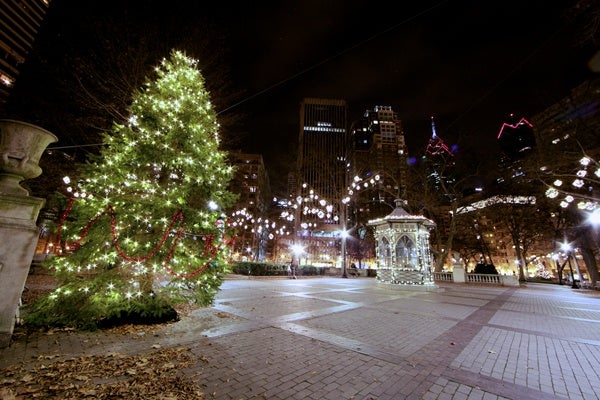
<p>Philadelphia's Rittenhouse Square, at 18th and Walnut streets, is decorated with a Christmas tree and a menorah and lights throughout the park. (Nathaniel Hamilton/for NewsWorks)</p>
-
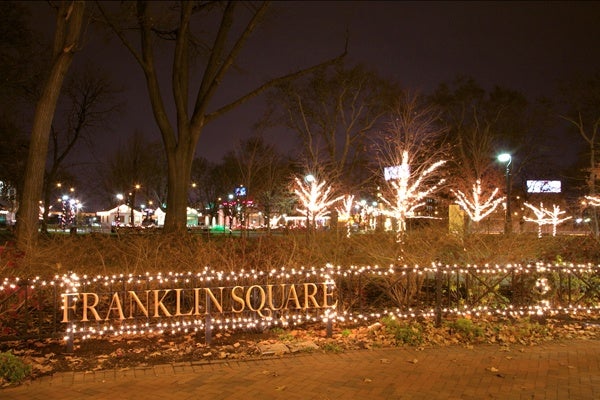
The decorated trees of Franklin Square, at 6th and Race streets in Philadelphia, sparkle at night. (Nathaniel Hamilton for WHYY)
-
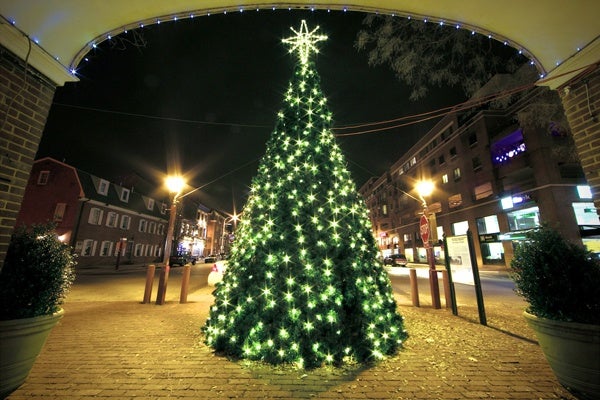
<p>Headhouse Square located at 2nd and Lombard streets in Philadelphia is decorated for the holidays. (Nathaniel Hamilton/for NewsWorks)</p>
-
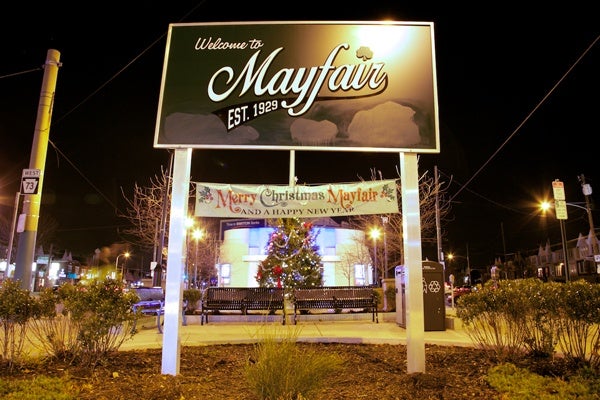
<p>A small park, located on the corner of Cottman and Franford avenues in the Mayfair neighborhood of Philadelphia features a decorated tree. (Nathaniel Hamilton/for NewsWorks)</p>
-
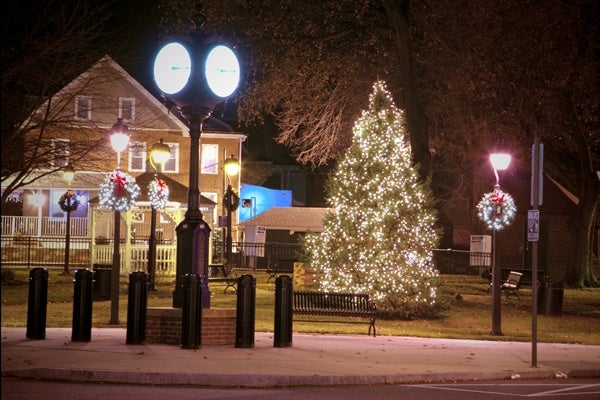
<p>Lions Park, located on the corner of Oxford Avenue and Loney Street in Philadelphia. (Nathaniel Hamilton/for NewsWorks)</p>
We lived in a rented house the fall of my 12th year. Our new home was under construction and significantly behind schedule. So after moving out of my grandparents’ house, we found an ugly, cramped house close to school — with a bully on one end of the block and an 11-year-old Hindenburg scholar who wanted to be my best friend on the other end of the block.
It was 1973, a year in which we conserved in every way possible, eating casseroles and driving a more efficient car, making, rather than buying, our Halloween costumes, and turning off every light behind us.
Thankful but impatient
Autumn, I thought, would be salvaged by Thanksgiving: family, turkey, hot mashed potatoes, and all the fixings.
Perhaps we tried too hard. Either the turkey was too large or the oven was too small; the meal took much longer than anticipated to cook. All the children were hungry and cranky. We didn’t want cold food, especially not cold mashed potatoes. My mother assured us that they would be warm on our plates. “But when will that be?” we asked in Osmond harmony.
My mother yelled at my grandmother. My grandmother yelled at my mother. My year-old sister yelled for everyone. My father, grandfather and uncles ate sharp cheddar cheese and mustard. The children surreptitiously opened the oven door.
In time, the turkey did cook. The mashed potatoes seemed hot under the veil of hot gravy. We ate too much, too fast: 20 minutes at the table. After, as I slouched comfortably in an uncomfortable chair with the faint sounds of “The March of the Wooden Soldiers” in the background and the distinct sounds of my mother, grandmother, and aunts washing the dishes, a replica of Big Ben, which had kept me awake during the months we lived with my grandparents, tolled for me, reminding me that it is good to give thanks.
Preparing for Christmas
As Christmas approached, my parents did all they could to make us feel at home. With toilet paper tubes, my mother, sisters, and I gathered at the kitchen table each night and created Christmas tree ornaments. With different colored felts and fabrics, wasteful amounts of glue, even greater and sloppier quantities of glitter, brocades, and pipe cleaners, we created drums, wooden soldiers, nutcrackers, and other simple, festive tree trimmings. My mother told us that our colonial ancestors prepared for Christmas in the same way.
Because our perfectly fake tree was packed in a box at some relative’s house, we bought a live Christmas tree from the local Christmas tree bazaar, a previously abandoned lot with strings of flashing lights. We didn’t expect to find our tree until after the winter thaw. I openly hoped we would never find the green pole and color-coded spruce-like branches that had served as our family Christmas tree in years past.
“But it’s so beautiful,” my mother said reverentially of her fake tree each year when we asked why we did not buy a live tree like other families. “Besides,” she said, “I don’t have to vacuum up any needles.”
Our first live tree was adorned with shabby ornaments, stringed popcorn, and a collection of misfit balls, some of which had unraveled like a mummy on the way to a Halloween parade. That tree, we were warned often by our parents, was all there would be this Christmas.
In prior years, “Santa” had been excessively generous on Christmas morning. In the weeks — even months — leading up to Christmas, we spent hours studying the Sears “Wish Book,” making lists, marking pages, dropping hints, tearing up our lists, and making new, revised lists.
All my life, Christmas morning was a time of wonder and enchantment. The fake tree seemed bigger and brighter over all the brightly wrapped boxes in the room. Our parents seemed to enjoy watching us even more than we loved opening presents. Faster than you can eat a Thanksgiving turkey, the living room became a pile of wrapping paper scraps, with happy children and stacks of presents buried underneath, an occasional bicycle or other oddly shaped gift jutting out.
We were warned again and again that this year would be different. There would be a gift or two, but nothing extravagant.
The big day
When Christmas morning finally arrived and my father issued the signal for us to gather in the living room, we scrambled from our bedrooms to the living room like hounds chasing the scent of the tree. The tree stood in the corner of the room, sadly hung with our ornaments, much the way we left it, with the exception of a handful of small presents under the needle-dropping branches — and, of course, mother’s vacuum nearby.
We could see the carpet, the Christmas tree blanket, and even the stand! My sisters looked around nervously, their eyes straining to see if there were presents hidden behind chairs or the sofa.
I got a small travel pinball game. It had a spring for launching the tiny ball bearing into a number of holes for 0, 10, 25, or 50 points. No assembly or skill required.
We sat around, looking at each other for a while. My sisters sniffled and occasionally went to the bathroom to blow their noses. They were coming down with something, they said.
I was still trying to win my first points on the travel pinball game when my father suggested that we drive to the new house — our real present — to see how construction was proceeding. We changed, crammed into the car, and drove across town to see the new house, which we had not seen in weeks.
A second chance at Christmas
We pulled into the unpaved driveway in front of the house. The windows were in and the cedar siding was on, but not yet stained.
My father unlocked the front door and held the door for us. We entered and looked to the left and right: unfinished floors, sheet-rocked walls, bats of unused insulation, coils of electrical wire hanging from junction boxes, and a workman’s wooden ladder leading to the second floor.
My mother told us that the living room would be to our right. On Christmas day, 1973, it looked like a room for spackling, not for living. The dining room would be to our left. Ahead was the family room.
My father led us to the family room to show his greatest pride and joy, a fireplace the width of the room, adorned with river stone we gathered on weekend trips to New England. This, we knew, was the room where we would celebrate Christmas in the future.
The darkened room was lit by our fake blue spruce, lit with the lights and decorations the family had stored. It is beautiful, I thought in deference to my mother.
The room was completely finished: paneling, stained molding, electrical outlets and light switches, carpeting, and Christmas presents — mounds of Christmas presents — under the tree.
We opened them — more presents than we had ever known. My sisters lost their sniffles. After, my mother served us Christmas stollen around a space heater in the unfinished kitchen. Father burned the torn wrapping paper in the big fireplace, which heated the room heartily. We sat around, not sure whether to take in the room or play with our presents.
It is ironic that I spent so much time and effort that year worrying about Christmas, and especially what I wanted, yet I do not remember one gift under the tree.
That Christmas, I came to cherish most the gifts around the tree.
Jeff Cromarty is the chief operating officer at Philadelphia University.
WHYY is your source for fact-based, in-depth journalism and information. As a nonprofit organization, we rely on financial support from readers like you. Please give today.

